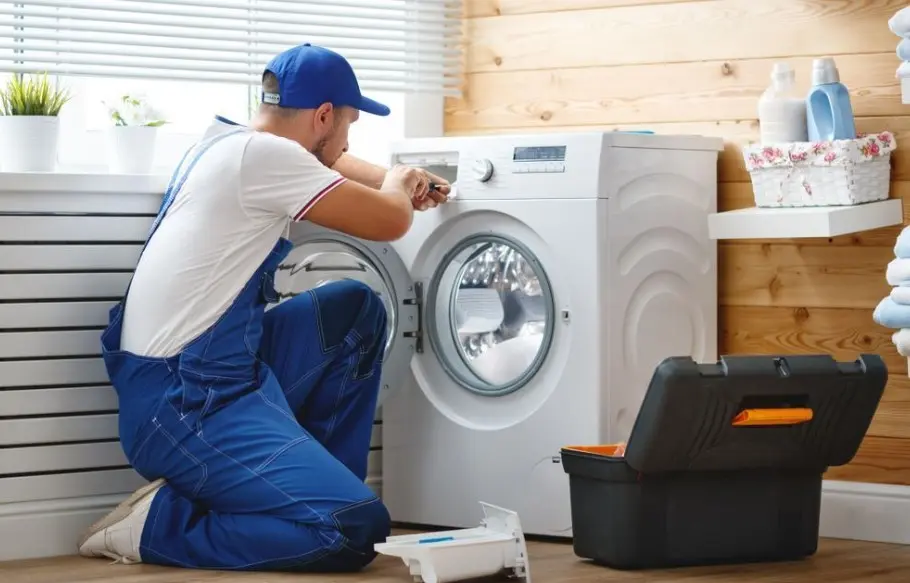Why DIY Appliance Repair Is On The Rise
The rising cost of new household devices has led to a surge in DIY appliance repairs, resulting in increased satisfaction and cost savings. This DIY approach also helps reduce e-waste, a pressing environmental issue. Thanks to online tutorials, support forums, and step-by-step guides, the average American household now attempts at least one appliance repair annually.
Easy access to authentic and compatible parts plays a major role as well. Reputable websites like Samsung Parts make it achievable for homeowners to find exactly what they need without navigating confusing catalogs or questioning the legitimacy of the pieces. According to a thorough report on home repair trends, about 60% of households across the United States have tried their hand at appliance repair in the past year alone. This upward trend not only boosts household savings but also supports a more sustainable lifestyle, proving that fixing beats tossing in many circumstances.
Preparing For An Appliance Repair
Before starting a home repair project, it’s crucial to thoroughly diagnose the issue. Look for patterns in malfunctions and consult the original manual for troubleshooting tips. Online searches can provide valuable information on the problem and the required skill level. Gather necessary tools, create a clear workspace, and take photos of each step during disassembly. Test the appliance before and after the repair to understand its response. These steps reduce stress, errors, and overall repair time, while also building confidence and preventing abandonment of the project.
Common Household Appliance Problems
Appliance problems often appear similar, but are often caused by a few component failures. Common issues include fluctuating temperatures in refrigerators, dirty dishes in dishwashers, and humming dryers. Common problems include blocked spray arms, clogged drains, loose door switches, and malfunctioning sensors. Common issues in dryers include faulty drive belts, airflow blockages, faulty door switches, and inefficient cooling. A comprehensive troubleshooting guide can help identify common breakdowns and fix them on your own, extending the appliance’s lifespan and saving time, money, and the hassle of scheduling professional visits.
Tools And Parts You May Need
A well-assembled tool kit can be a convenient solution for repairing appliances. Essential tools include Phillips and flathead screwdrivers, needle-nose pliers, nuts or wrench sets, a digital multimeter, a strong flashlight, and safety glasses. Common replacement parts like belts, hoses, filters, and fuses are essential for most appliances. As confidence grows, it may be worthwhile to upgrade the toolkit with additional specialty items. Maintaining an inventory makes repairs less daunting and more efficient, making them less daunting and less daunting.
Safety Tips To Keep In Mind
DIY appliance repair is beneficial, but safety should be a top priority. Always unplug electrical appliances before starting work, especially water- or gas-tied ones. Wear gloves and safety glasses to protect your hands and eyes from sharp edges. Keep children and pets away from the work area to avoid distractions. If a situation feels unsafe, pause the project and seek professional help. These precautions protect you and ensure your home stays safe during the repair process.
Step-By-Step Guide: Replacing Appliance Parts
Replacing a part in household appliances can be daunting, but a methodical approach can make it manageable. Disconnect power sources and water or gas lines, take a picture of the assembled appliance, remove external panels, detach wires, hoses, or screws, match the old part to the replacement, install the new part in reverse order, reassemble panels, plug in the appliance, and run a test cycle to confirm the problem is fixed. This methodical approach reduces errors and improves understanding of appliances, making future repairs easier.
When To Call A Professional
While straightforward repairs and part replacements are often accessible to most households, some problems are best left to trained technicians. Advanced electrical faults, gas-related issues, sealed components like compressors, or anything involving hazardous chemicals pose significant safety risks. Attempting complex repairs without proper training can cause further damage, void warranties, or potentially put your safety at stake. If you feel uncertain at any stage or if something just doesn’t seem right, it’s smart and responsible to call a certified repair technician rather than attempting to force a solution. Your well-being and peace of mind are worth it.
Also Read-First Home Buyer’s Playbook: Smart Tips to Win Your Dream Home


